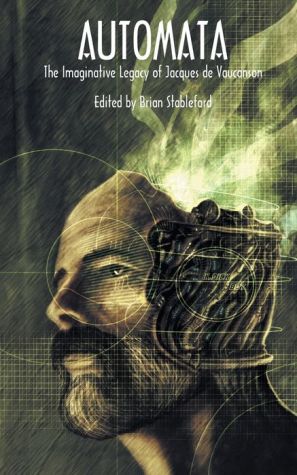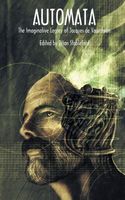- Welcome to FictionDB, Guest
- | My Account
- | Help

Automata — Brian Stableford
In 1737, French inventor Jacques de Vaucanson (1709-1782) constructed a life-sized automaton known as the Flute Player, which established him as a pioneer in the field. It was swiftly followed by a Tambourine Player and the Digesting Duck.
Vaucanson's endeavors in matters of industrial automation are largely forgotten, but the ingenious toys he built in order to advertize his skills, have become legendary. His story inspired writers of speculative fiction fascinated by the idea of humanoid automata. The idea of machines successfully mimicking human form, and perhaps human emotions.
By the time most of the 14 stories included in this anthology were written, in the latter part of the 19th century, Vaucanson's legacy was evident everywhere, with small clockwork automata being mass-produced. But the French authors who produced stories of automata invariably referenced Vaucanson in their flights of fancy.
We now live in a world where sophisticated machinery has transformed industrial endeavor, and robots equipped with artificial intelligence are achieving a remarkable sophistication. That does not mean, however, that the notions developed and extrapolated in these pioneering works of fiction have become redundant. They are tales told by seers ahead of their time, to whom the modern world gives every right to say "I told you so," and who posed a host of questions that require answers far more urgently now than when they were written.

